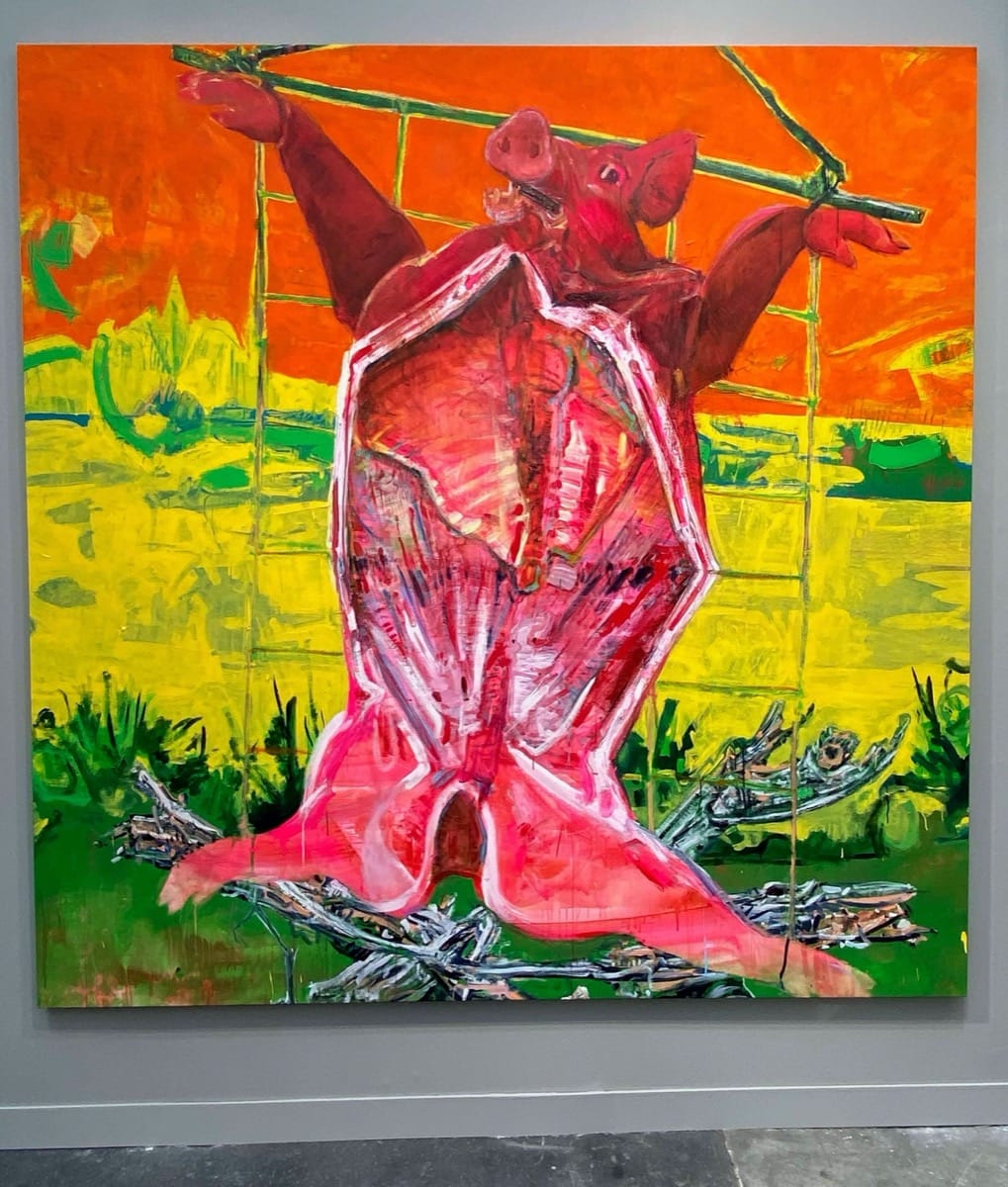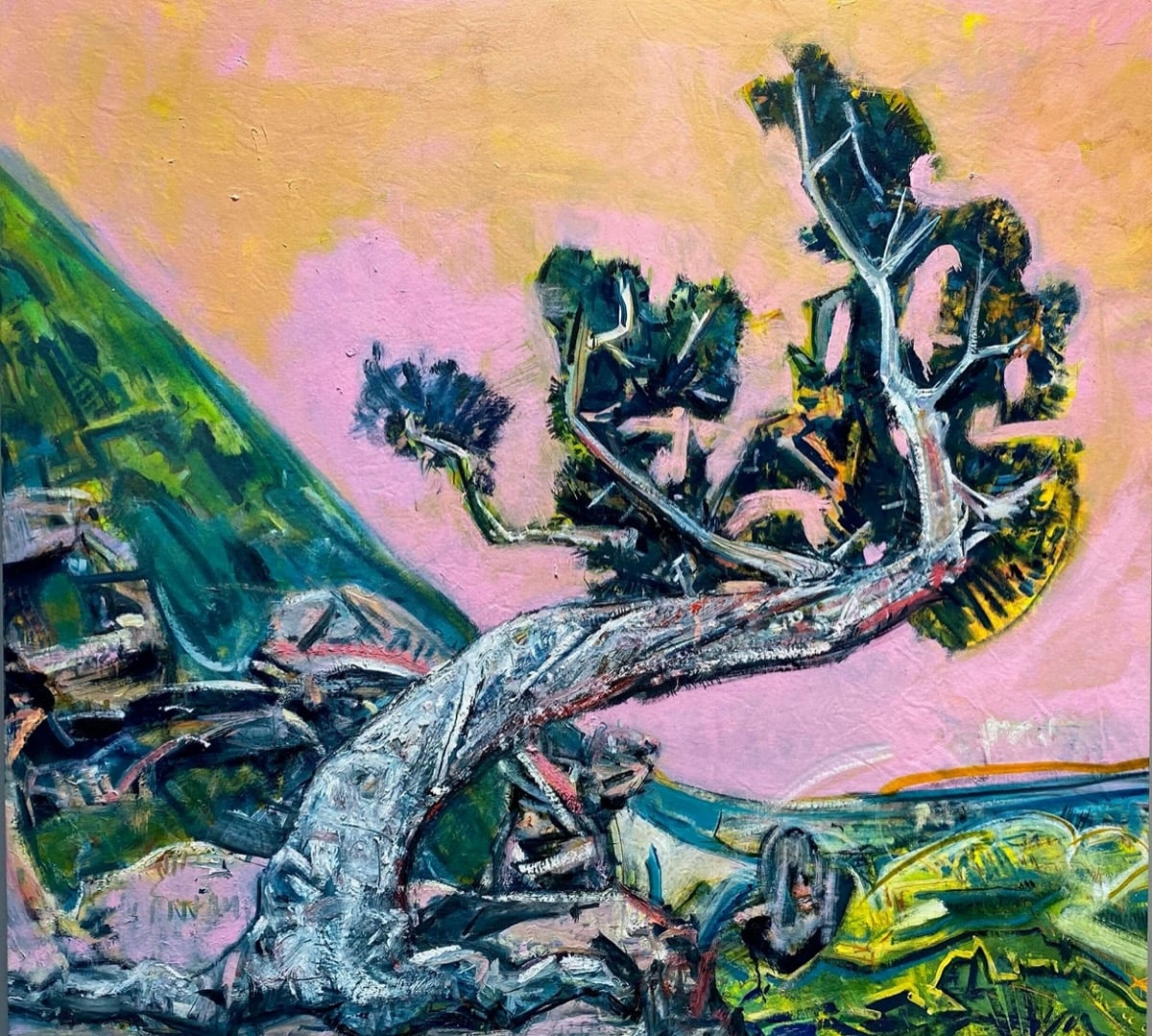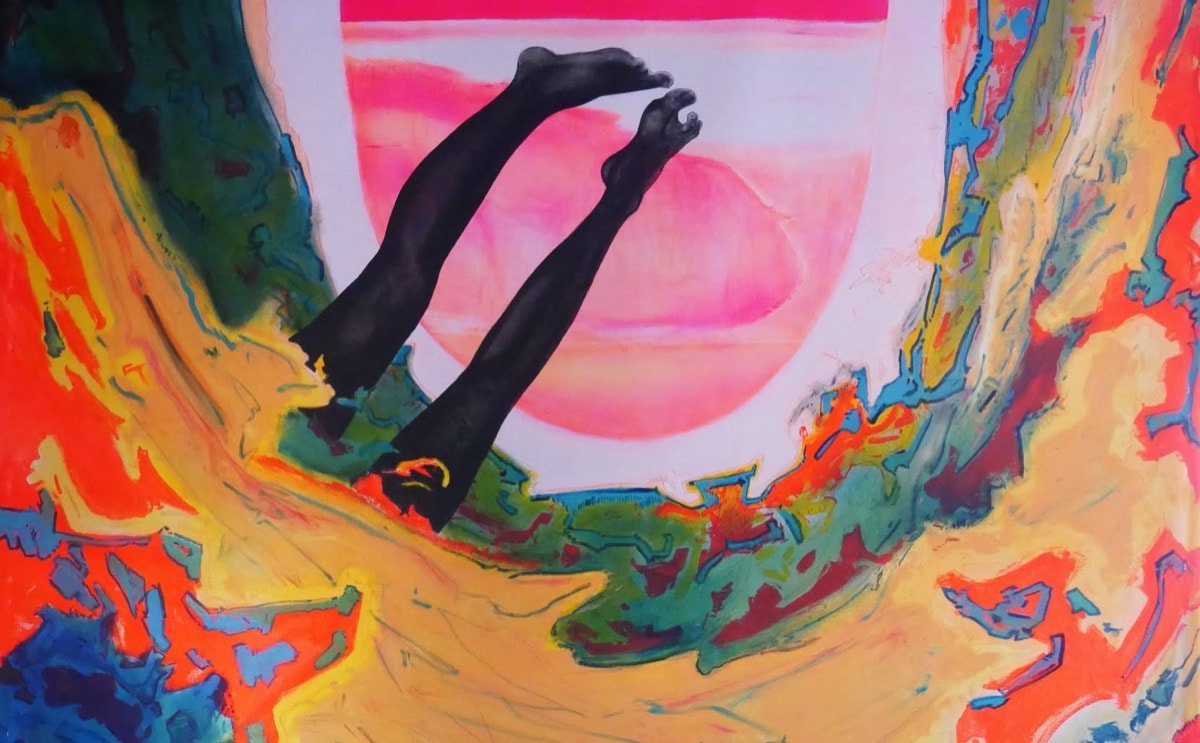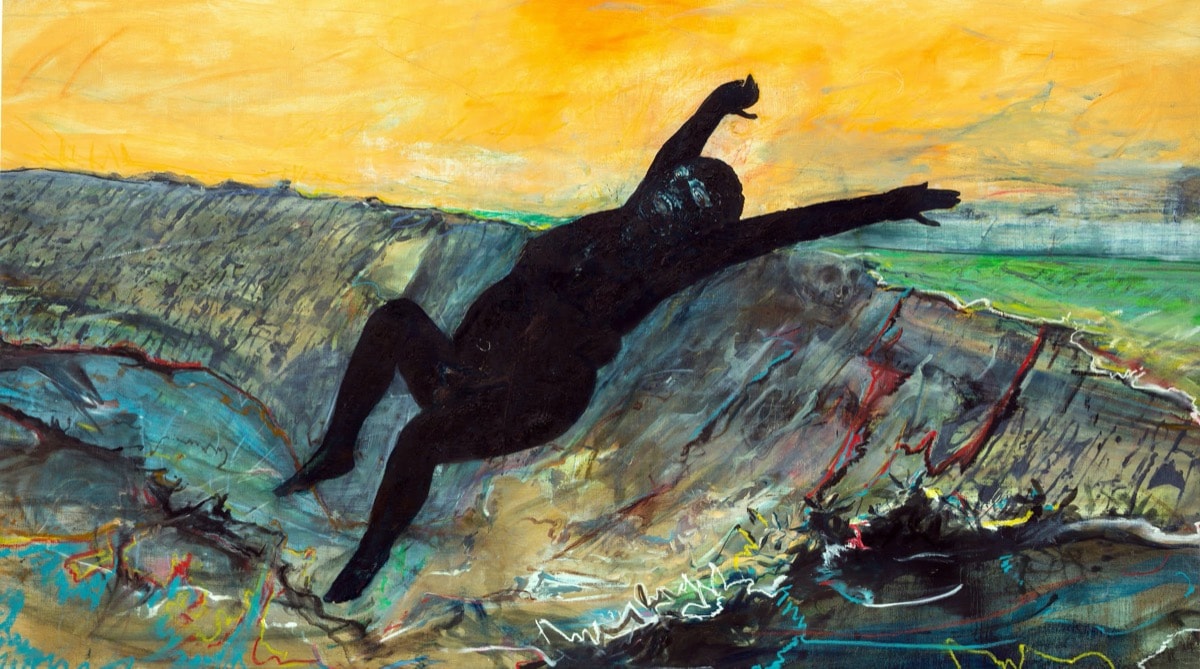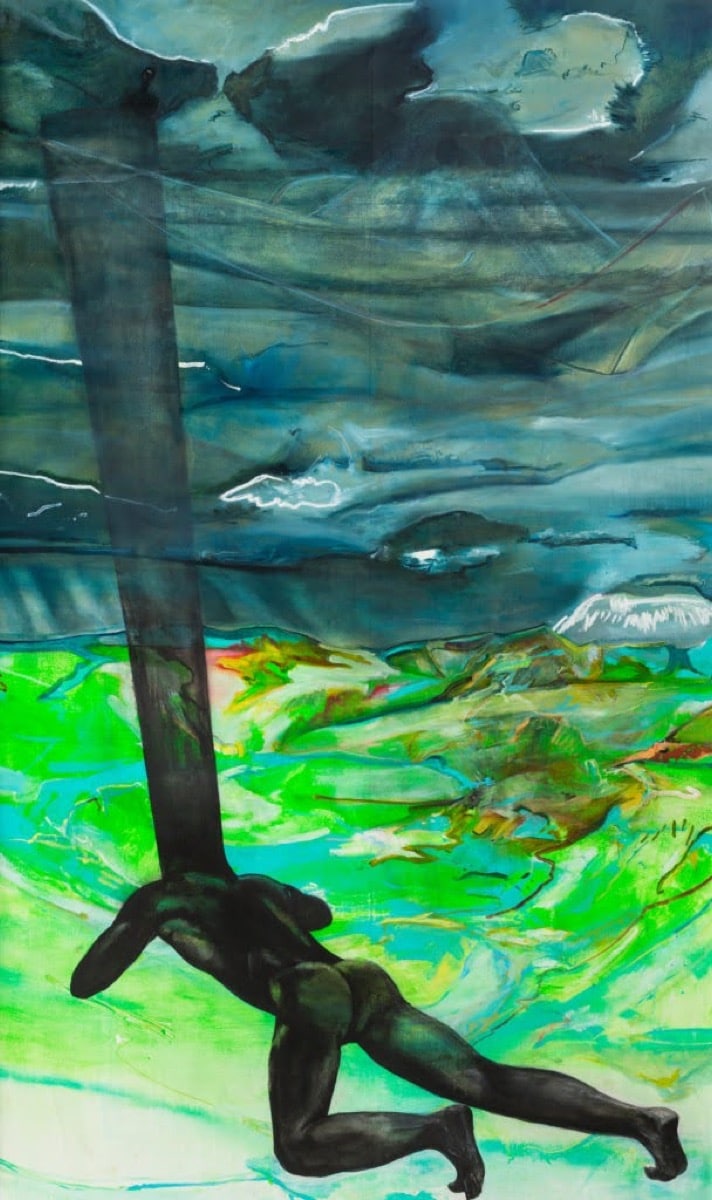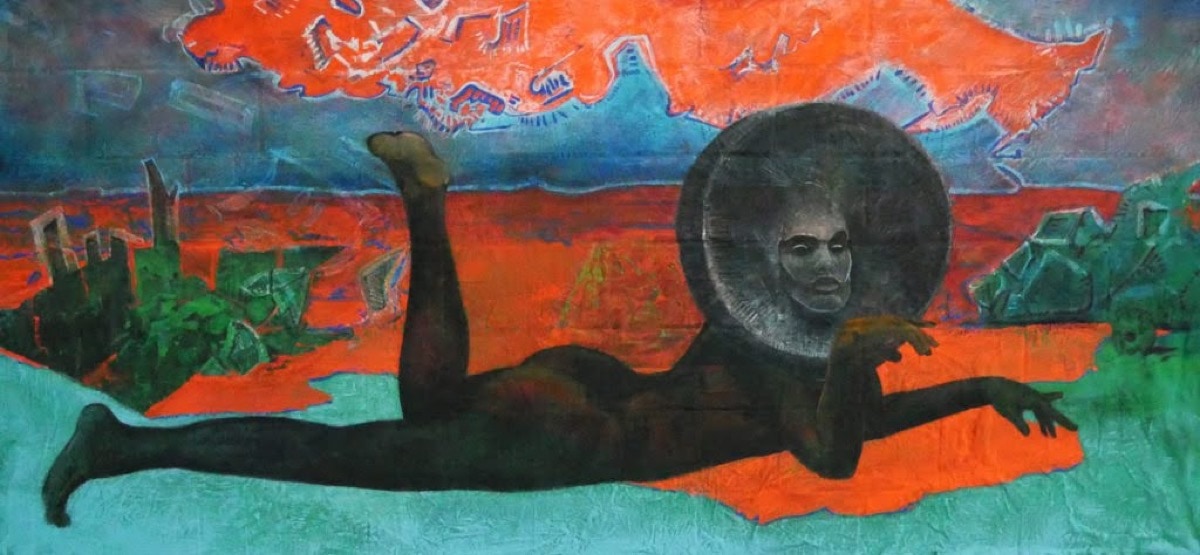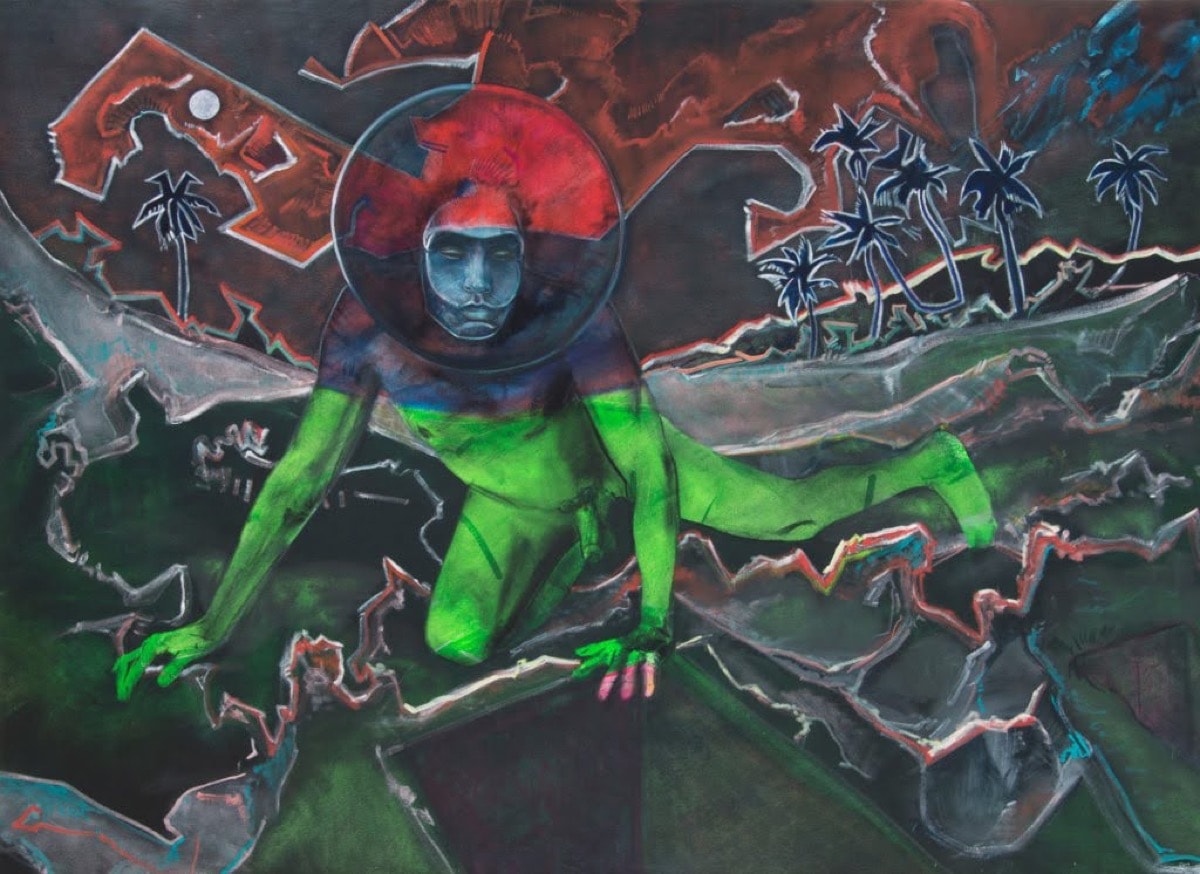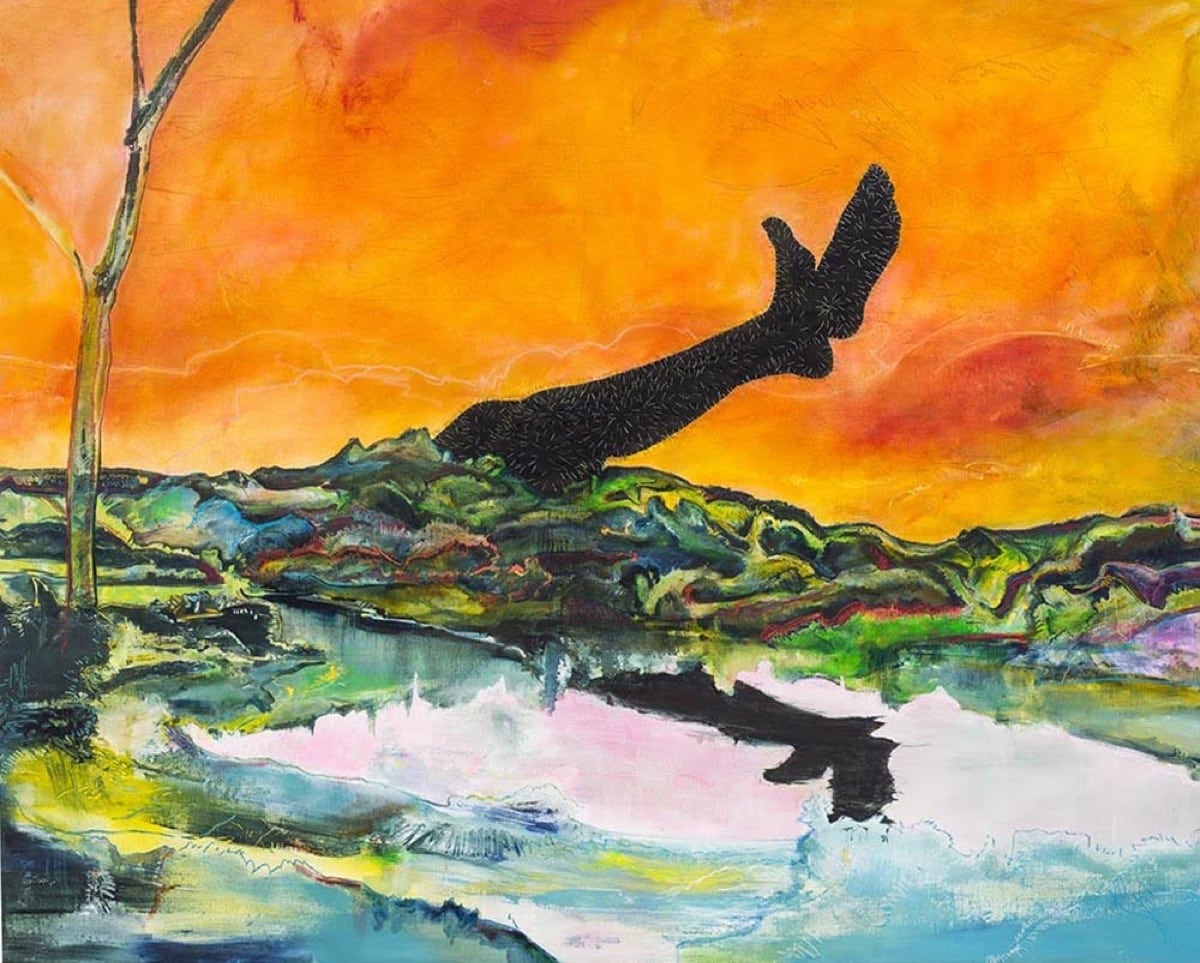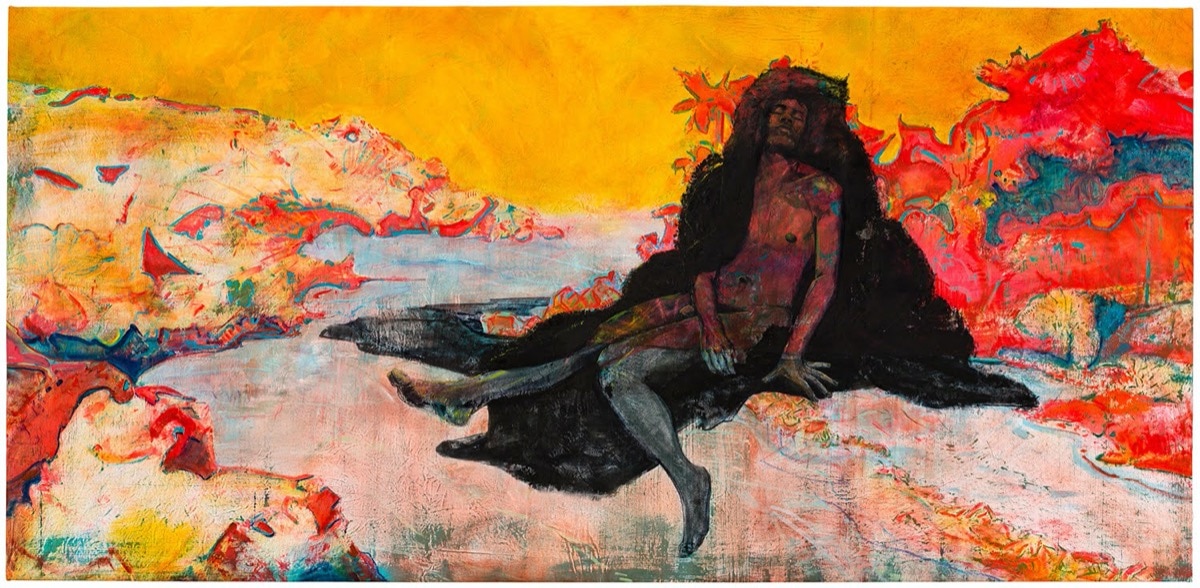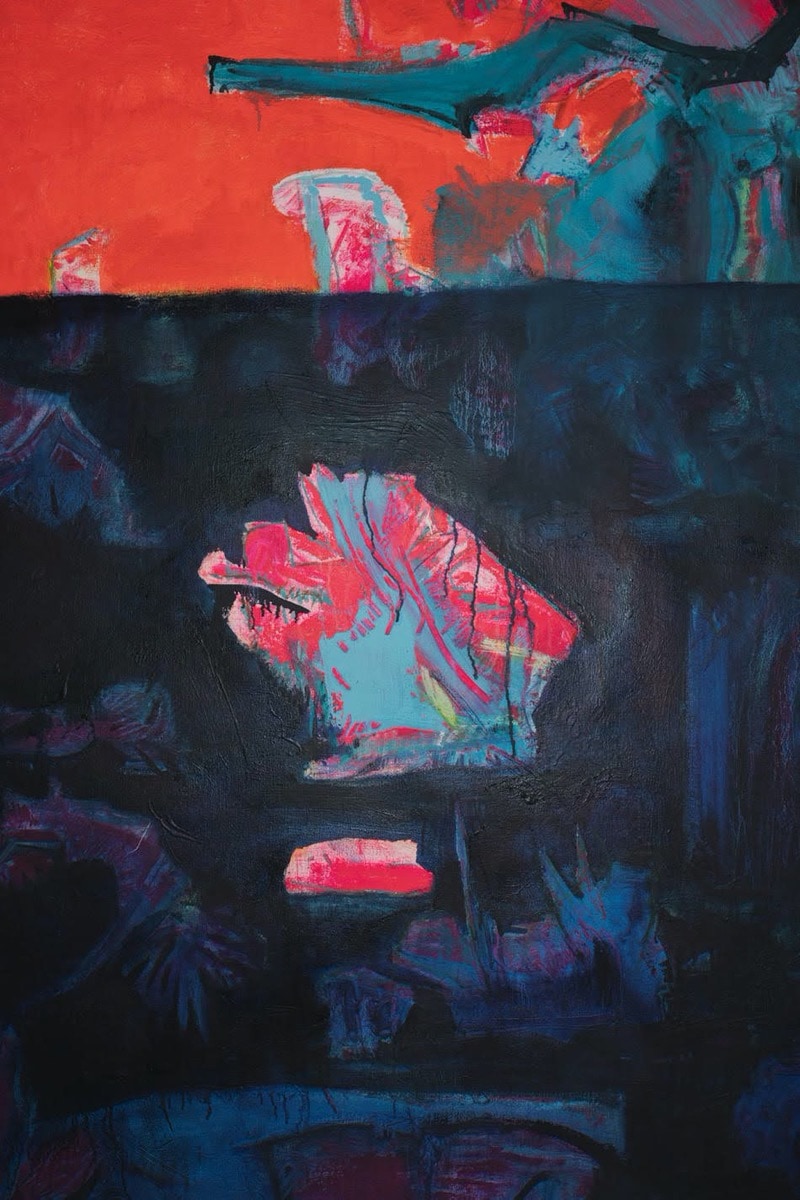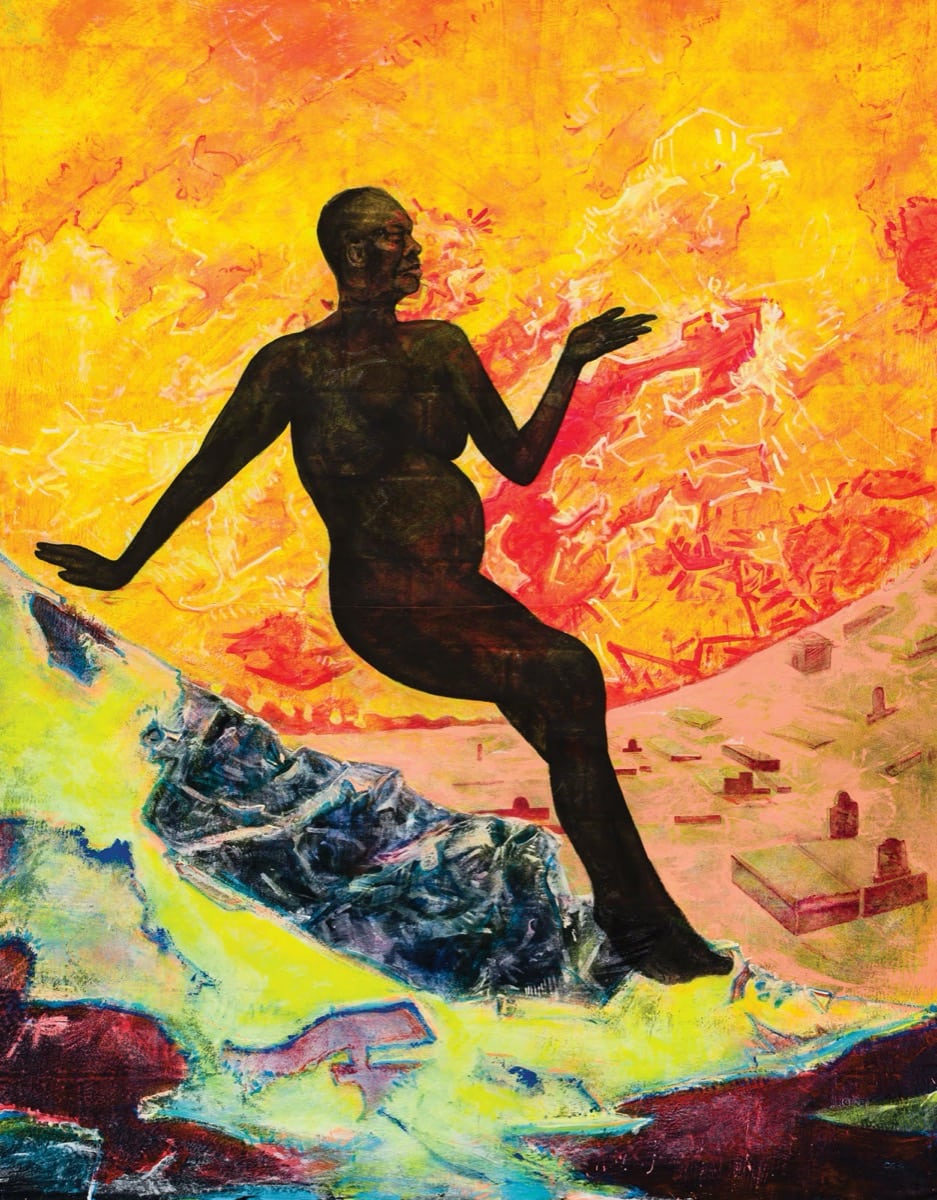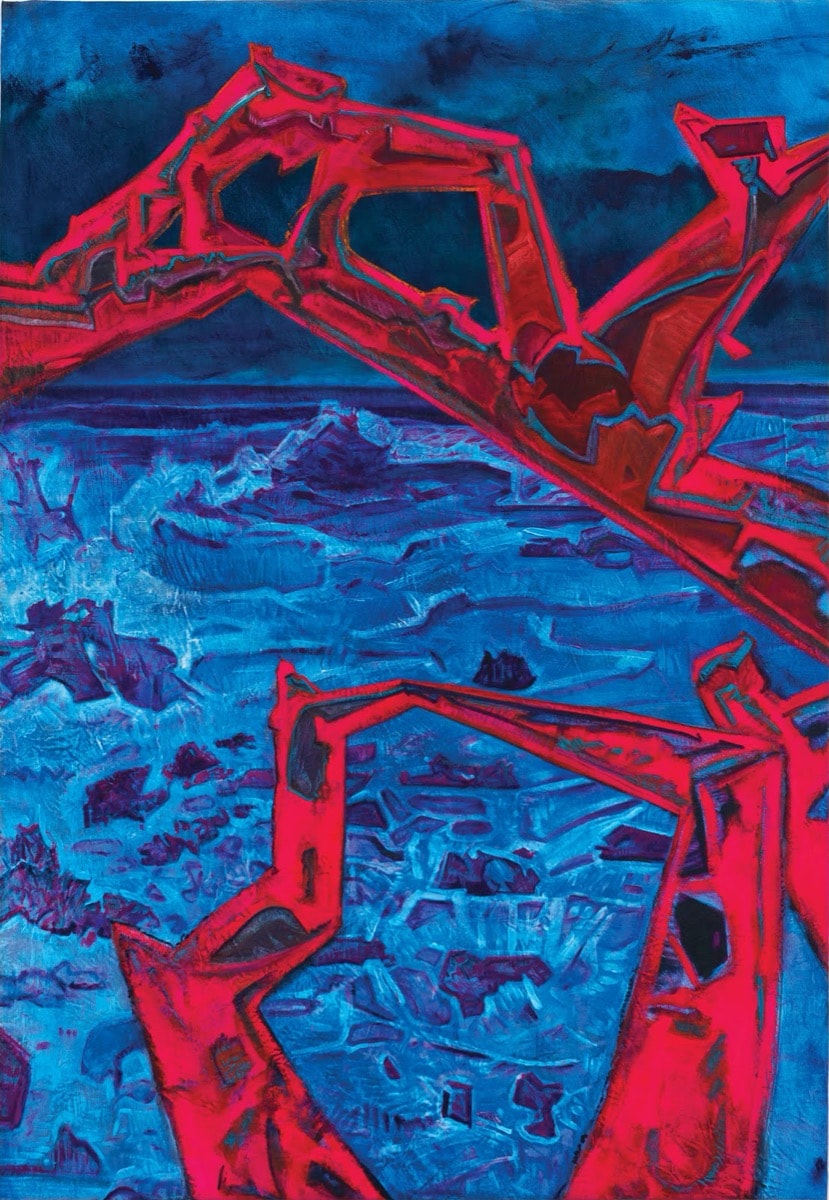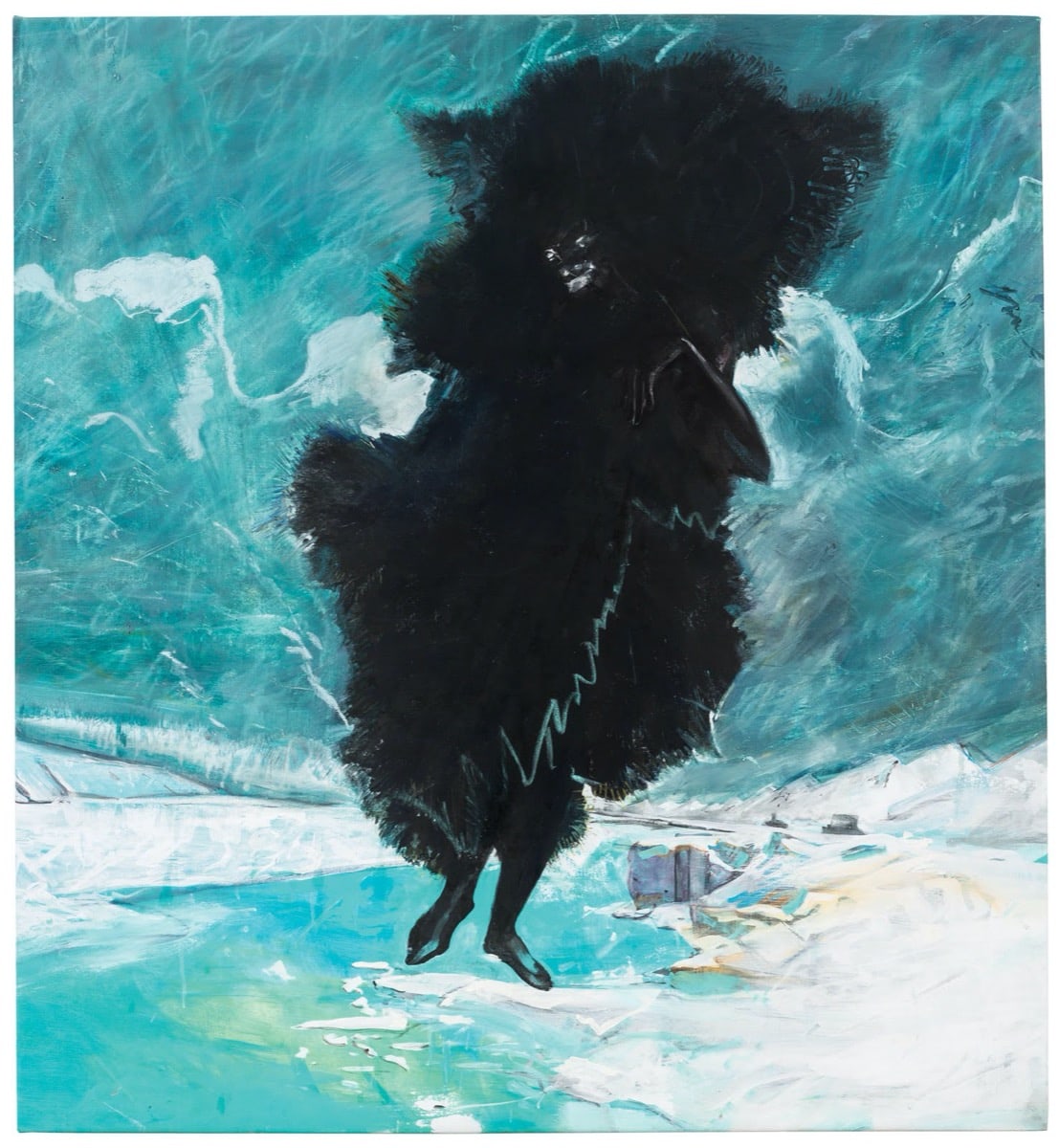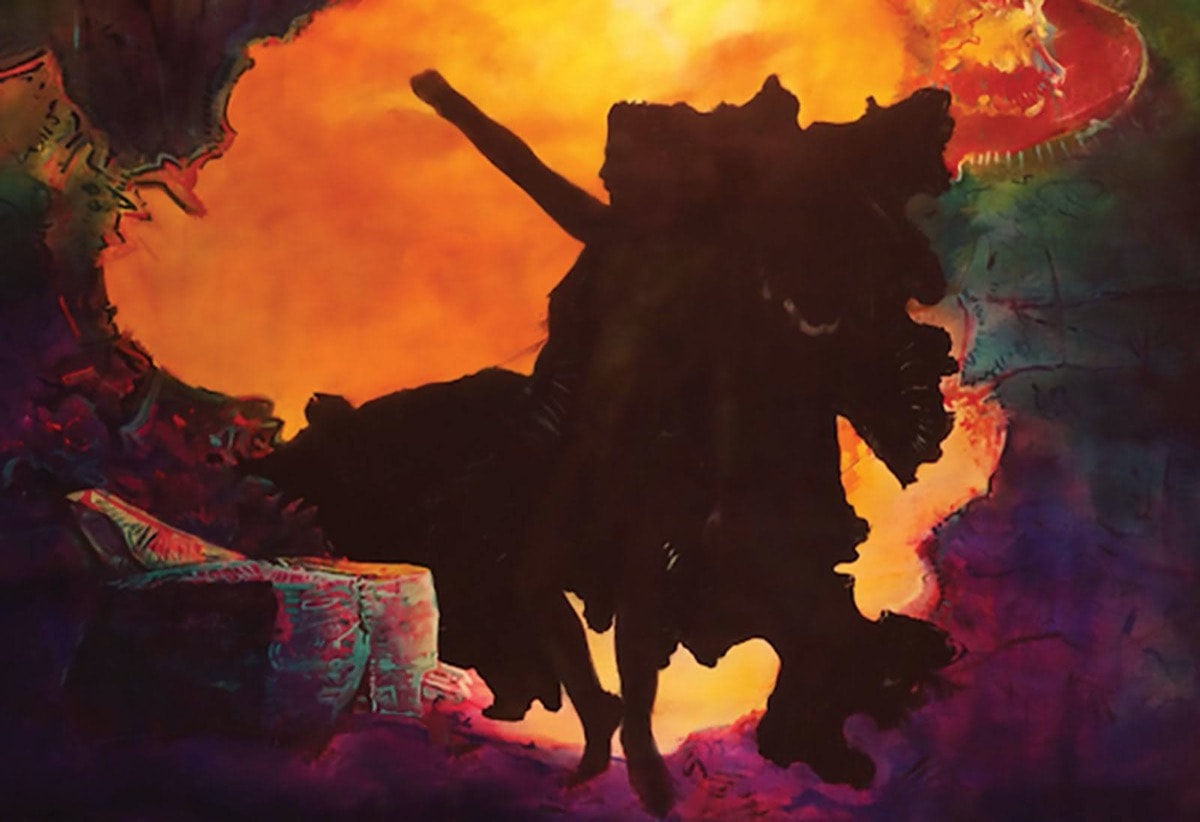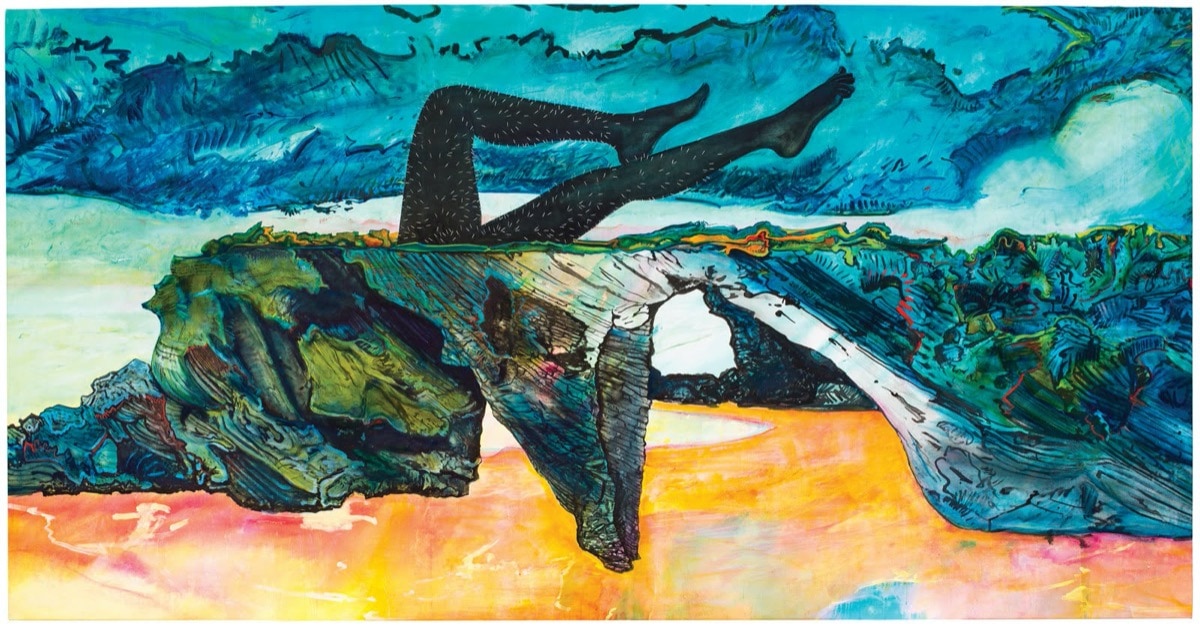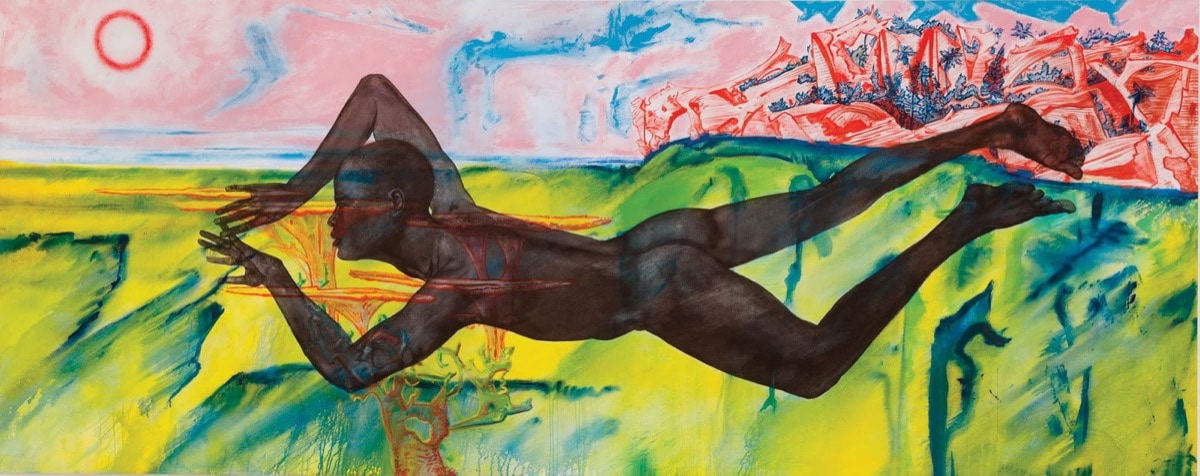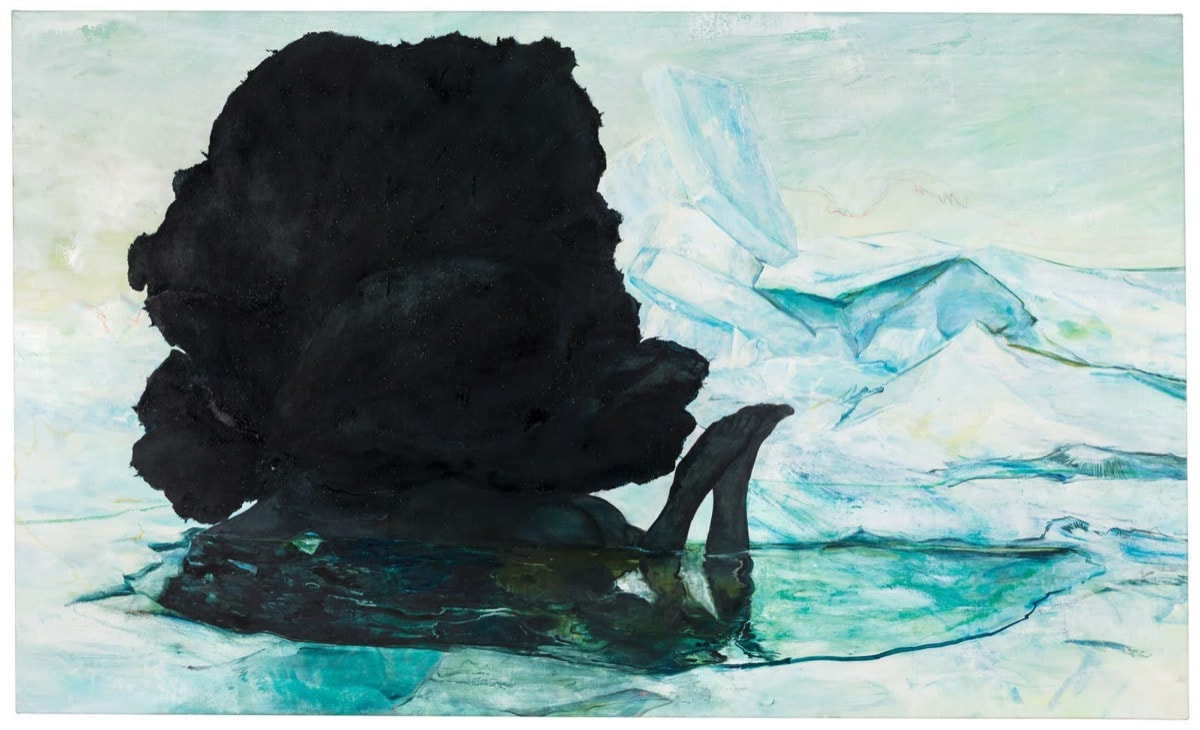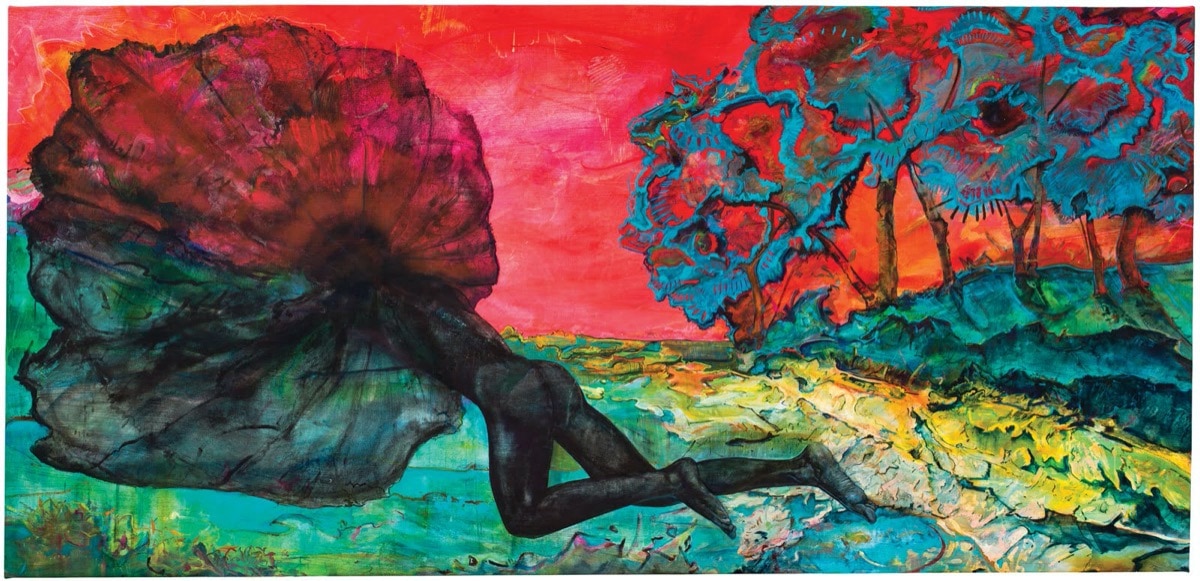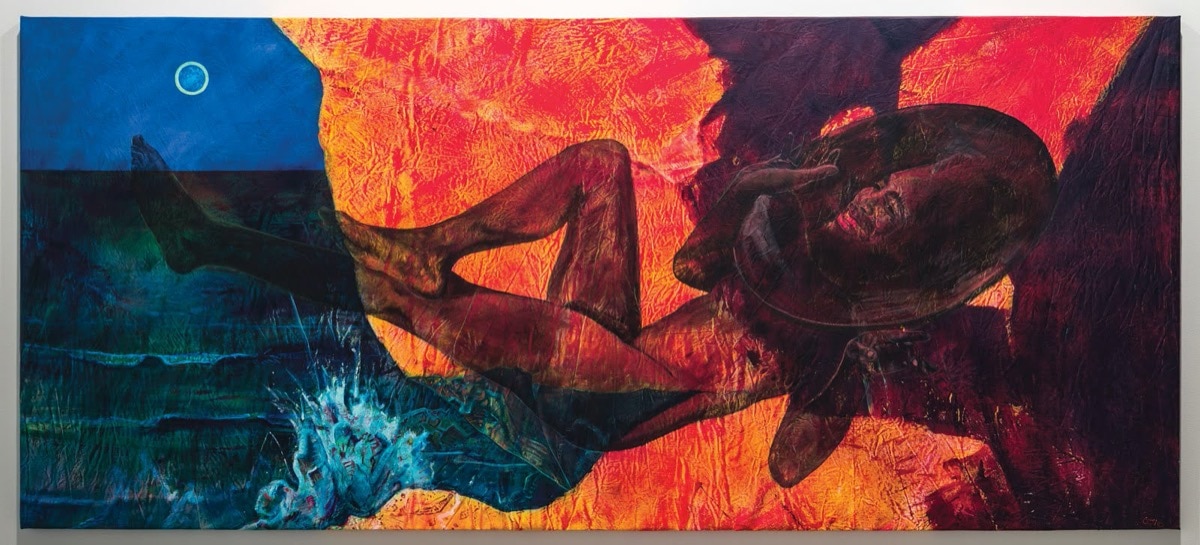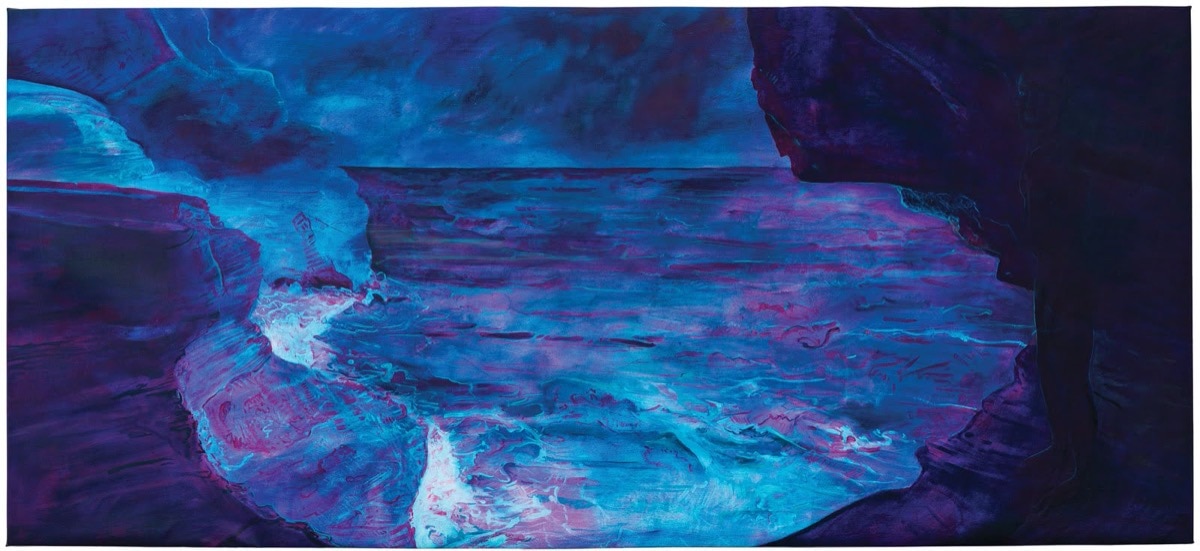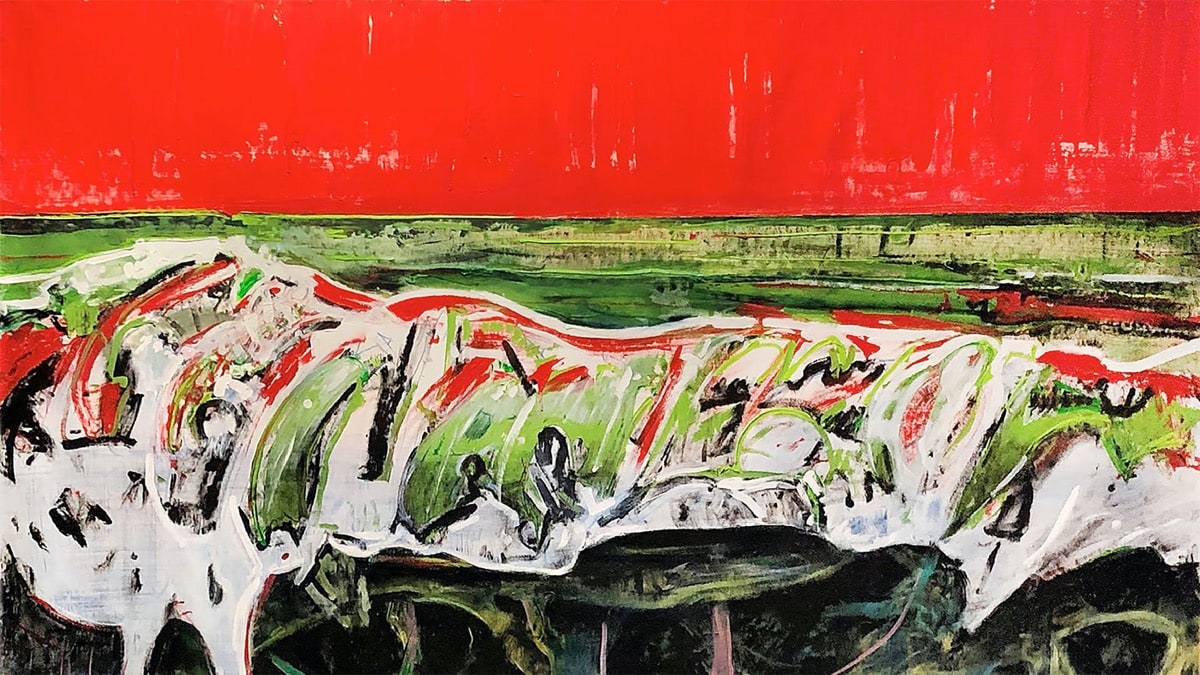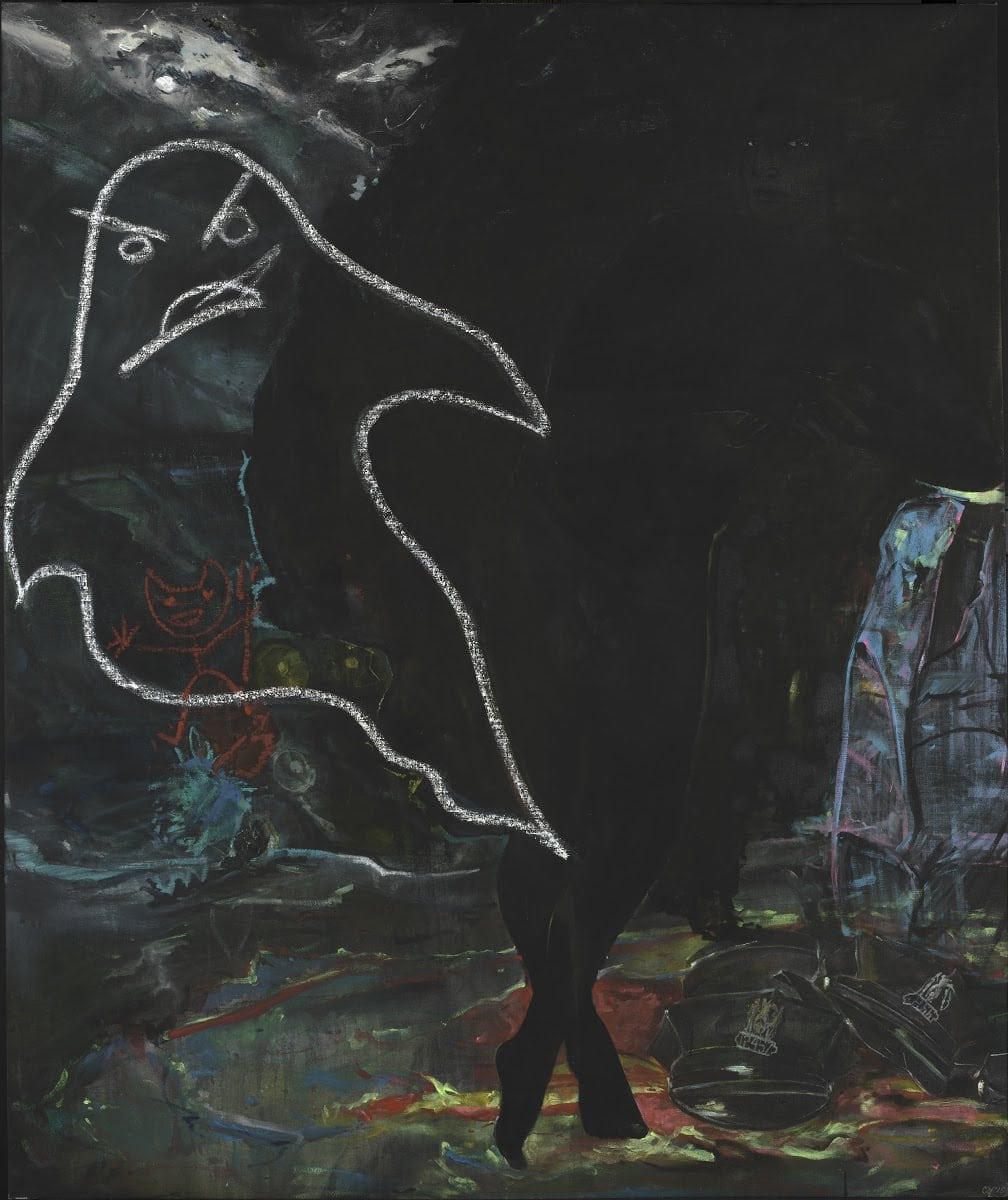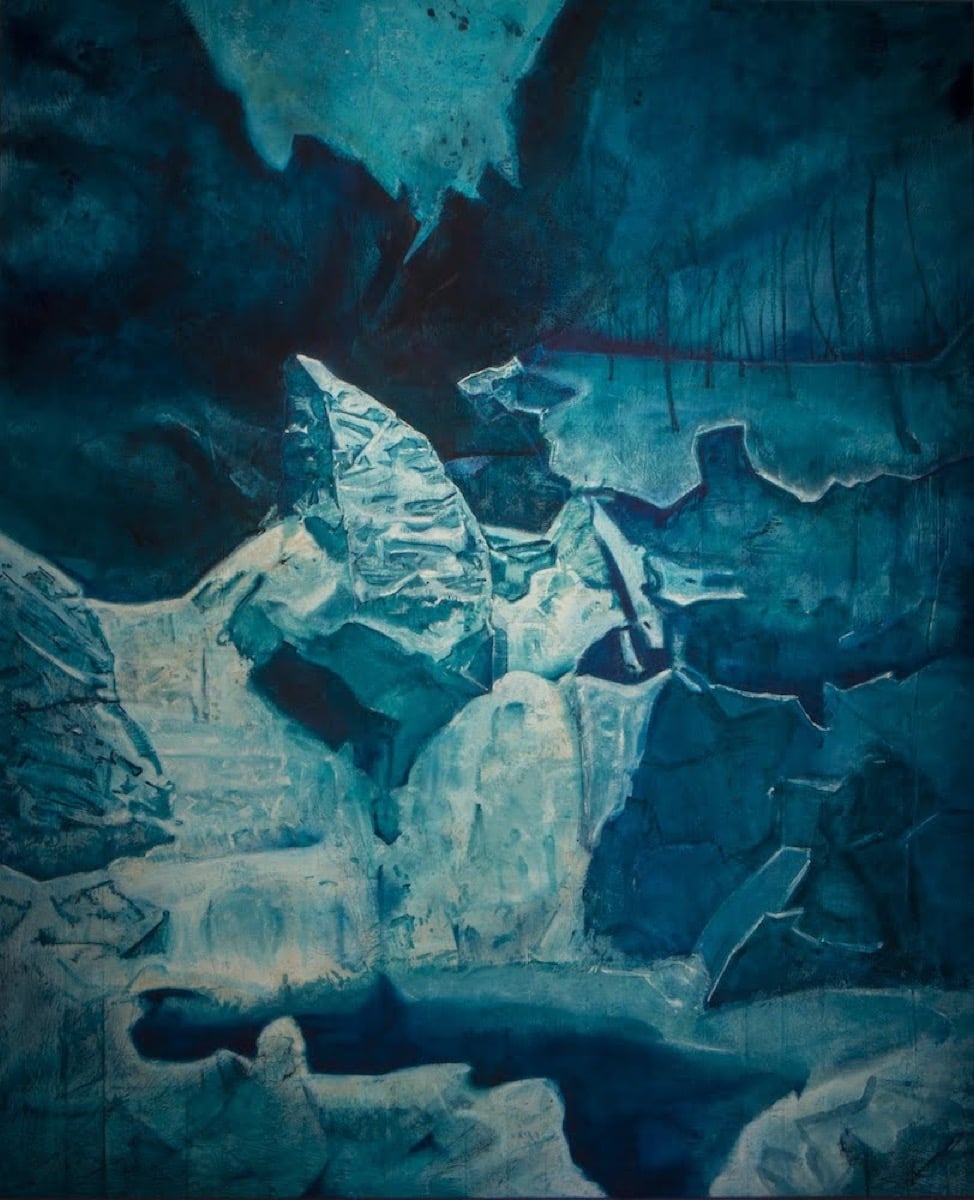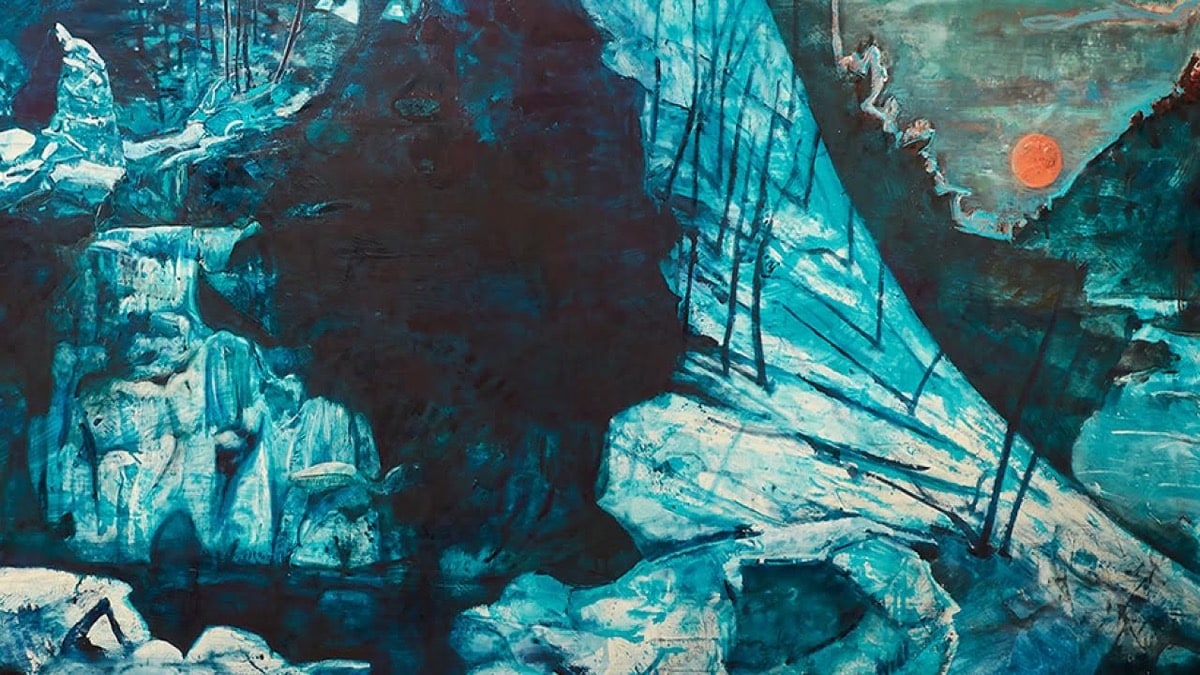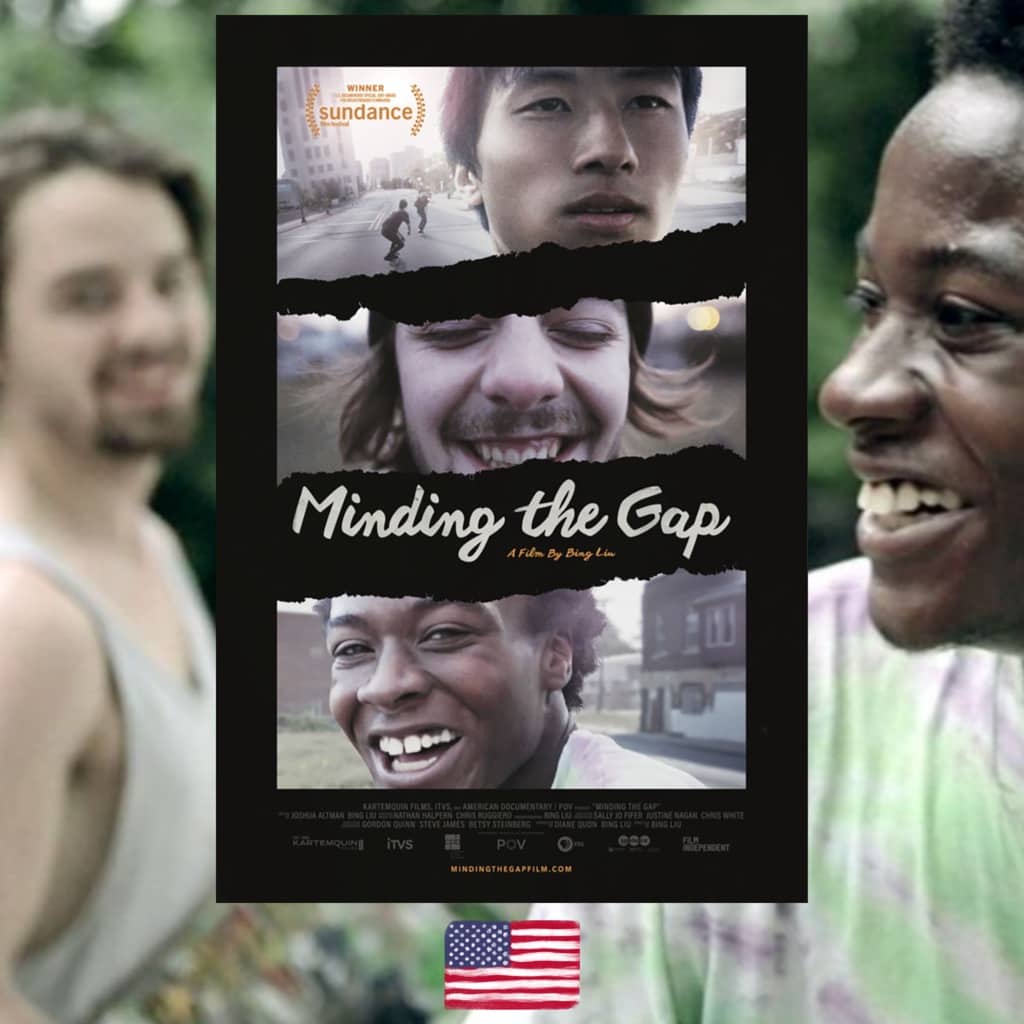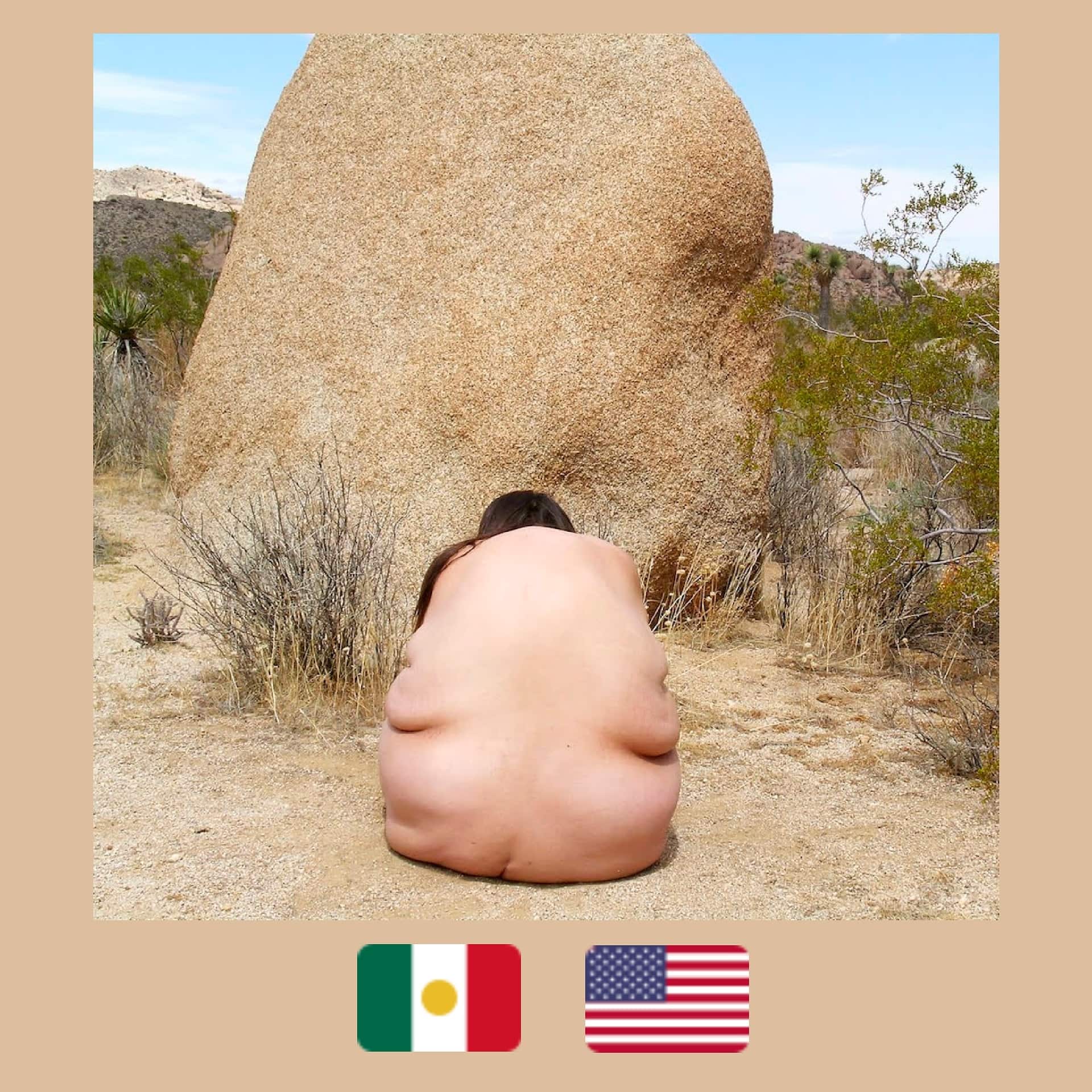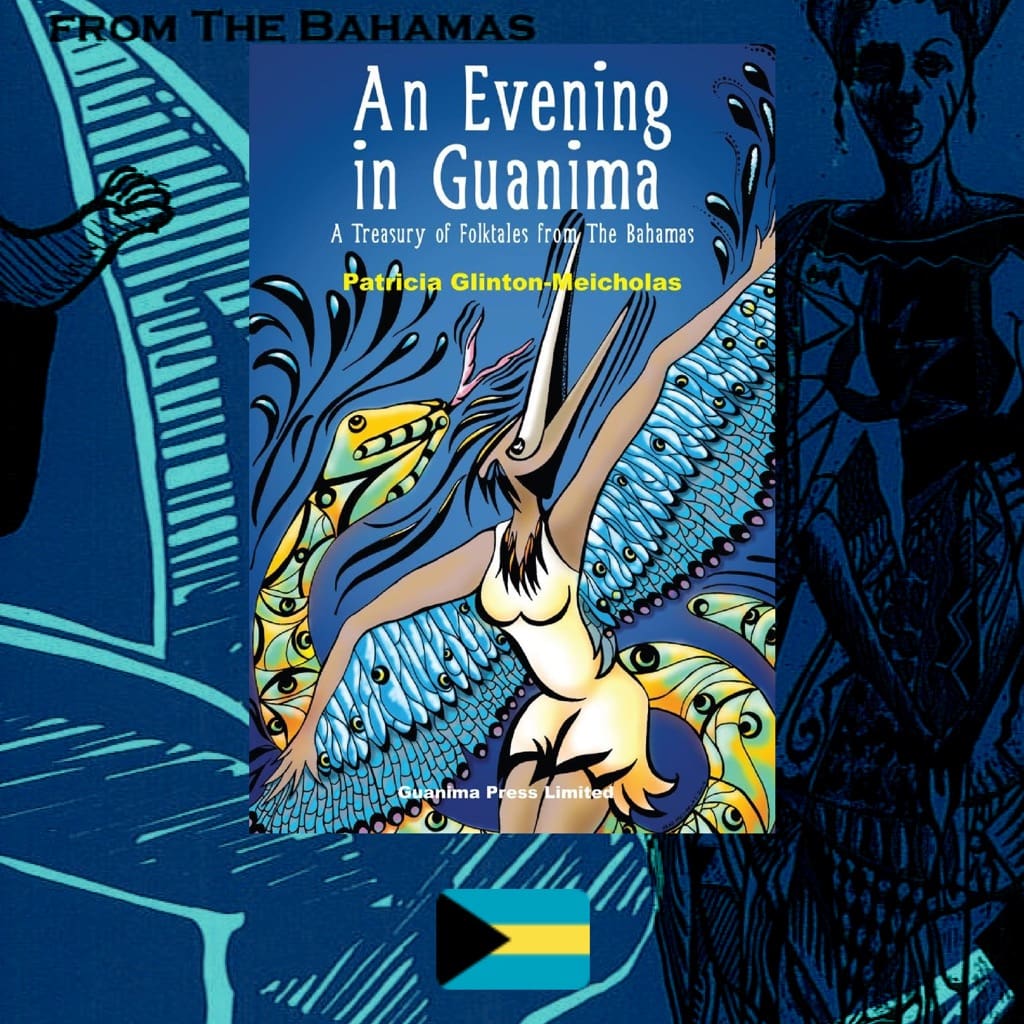Excavating the past and applying creative scrutiny, this exciting young artist creates electric landscapes that give power to those hidden in the colonial reading of history


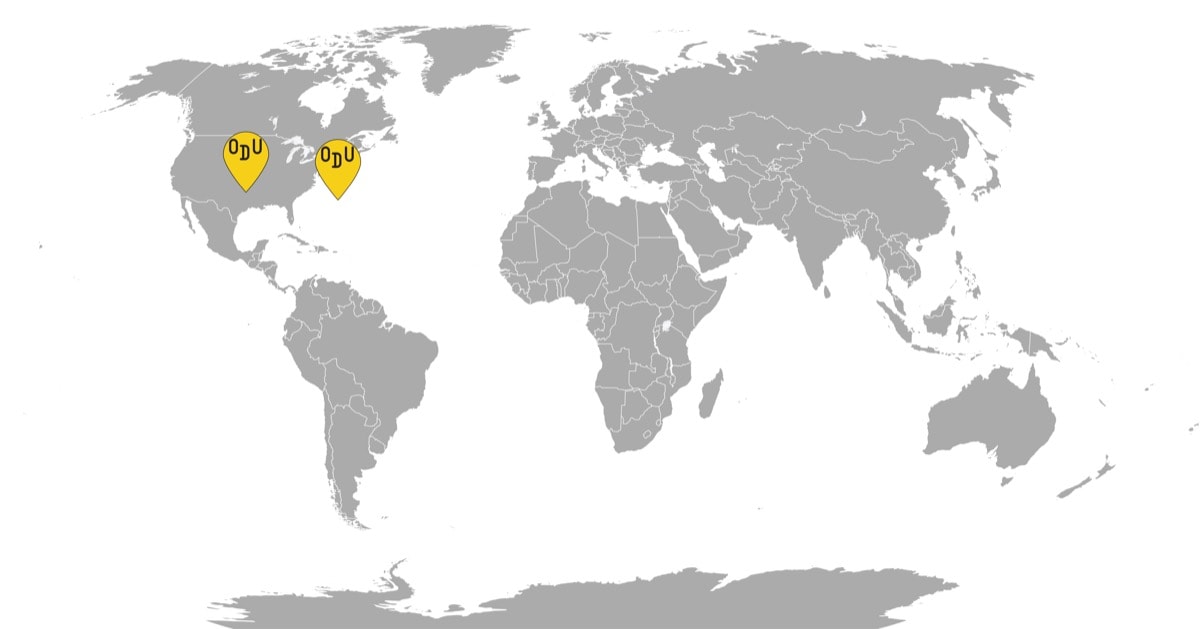
FROM UNITED STATES and BERMUDA
WHAT’S GOING ON: The nature is acidic, radiating an ominous heat, switching from infrared to ultraviolet across a whole neon spectrum. A post-apocalyptic setting, one might think, but it is of our recent past, where the injustices within the behavior of one particularly aware species had heated up the surroundings to a nuclear summer. In it, amidst the polychromatic tremors, black bodies emerge storm-like, unvanquished, the hairs lightly singed, wearing capes weaved out of the darkness within their captors. These dormant giants rise up as colossi of perseverance and retribution as the brutal reality of slavery within Bermuda, present in every facet of the country’s reality yet never fully reflected upon, is reexamined and brought to the surface. These suprematist excavations to counter white supremacy’s reign are the works of Cy Gavin, the American artist who traces his paternal ancestry to Bermuda. His ceaseless efforts to investigate the collective memory of the atrocities that the island has seen have led him to many discoveries. In turn, those resulted in a defiant body of work that seeks to grant the greatness back to those rebelling against their bondage.
WHO MADE IT: Born in the heart of the American Rustbelt, in a steel and coal mining town Donora in Pennsylvania, Cy Gavin hails from a family of industrial glass workers. After graduating from college, Gavin moved between the East and West coasts, worked with drag queens, adult film companies, opera productions, and acclaimed artist Vito Acconci, until he finally got back into school to get his MFA. Since graduating in 2016, he has seen his career expand, first through the NYC gallery circuit, then across the country, then finally making his Paris debut. Gavin’s biggest inspiration is Bermuda, his father’s native country, where he first went in 2015, searching for a connection with his deceased parent and with his roots. He discovered a landscape overwhelmingly shaped by the transatlantic slavery trade and newly colonized by the Anglo-Saxon tourism industry. However, the lives and bodies of the black slaves do not seem to be acknowledged anywhere: neither in the island’s historical society nor in the official narrative on the island’s past. So it became Gavin’s project to unearth the histories hiding alongside the lush greenery and the azure waters for which Bermuda is known. Now, operating out of his studio in the Hudson Valley, he creates his dazzling visions.
WHY DO WE CARE: Admiring the works of Cy is not merely pleasurable but also introduces the audience, who is willing to take the leap, to a wealth of rare information in portraying the figures that official historiographies seem to evade.
For instance, Gavin is very interested in the figure of Sally Bassett, the elderly Bermudian slave who was sentenced to death for allegedly poisoning the owners of her granddaughter. Bassett made a spectacle when led to her execution, mocking the process and joking at the gawking crowd, reclaiming the narrative. And even though her burning at the stake occurred in 1730 and made her a folk hero, Bassett’s legacy remains still too fraught with controversy for the Bermudian society—where a third of the population is white—to handle. In 2008, Bassett’s statue by sculptor Carlos Dowling was installed next to the Cabinet, the building housing the country’s government. However, after much outrage, it had to be moved indoors, away from the ordinary Bermudians’ eyes, so that the defiant beauty of the woman, bound to the stake with kindling around her naked feet, would not provoke the gentry.
In Gavin’s painting of her, Sally Bassett is seen laughing, covering her mouth, as she sits on the rocks, liberated, and everything around her goes up in green and orange flames. In creating the piece, Gavin used the seeds of Bermudiana, an indigenous Bermudian plant. According to the local lore, the first such flower was discovered growing from Bassett’sBassett’s ashes—a proof of her innocence. “What didn’t you do to bury me, but you forgot I was a seed,” wrote the Greek poet Dinos Christianopoulos, and by his hybrid gesture coming from the very heart of the brave woman’s mutiny, Gavin once more disseminated the seeds of dissent.
WHY YOU NEED TO PAY ATTENTION: “My work is questioning these social structures, not really attempting to answer to them,” Cy Gavin said in an interview about the occasions on which his work reflects the many systemic injustices suffered by the black inhabitants of Bermuda, including his own parents and grandparents. And this is perhaps the most honest assessment of their work that an artist can give. After all, the only feasible answer is a revolution. And Gavin’s work is indeed insurrectionary, concealing radicalizing knowledge under the phenomenal brushwork. Visually, Gavin’s paintings invite comparisons to the works by other transgressive Black artists, like Tunji Adeniyi-Jones and Chris Ofili, as well as the Greek-Russian master of electric illumination Arkhip Kuindzhi. But under the layers of throbbing beauty lie layers of meaning.
Inspired by the Kongo people’s aggressive mystical idols, the Nkondi, Gavin crafts dense fantasies, where tricksters arise. However, they are not merely spirits seeking to wreak havoc. They are inhabited by the souls of the rejected, like Sally Bassett, or the Mohican woman who was condemned to death for adultery and gave her name to the Bish-Bash falls, where she was supposed to be executed. There is precise alchemy by which Gavin summons those souls: not just of the forgotten heroes, but also of his father, whom he reinterpreted in a posthumous portrait using, alongside paint, the pink sand of Bermuda, his own blood, and his parent’s cremains.
And as apt and vigorous a painter as he is, Gavin’s subversive power lies in the fact that he is also a careful student of history and theory, who refuses to become content with reality, instead seeking the ramifications of the material evidence. Inspired by W.E.B. Du Bois he reinterprets the context of Bermuda’s transformations through the prism of social justice and excavates the landscape ripe for the reckoning. Some of the works in Gavin’s oeuvre are dedicated to Tucker’s Point, the Black community where members of his family had lived, which was razed to make way for the golf clubs and resorts. And it’s the passion and dedication of Gavin as a creative historian and archeologist who seeks to pin down the inequity of the past doubled with his voluptuous, immense talent that makes this young but accomplished artist one to watch out for. His works are a portal to fully realized, yet unresolved worlds, and investigating them, and holding them against rigid inquiry, is a rare, unimitable pleasure that so few artists take the care to provide.
For more content like this sign up for our weekly newsletter
MORE CY GAVIN


